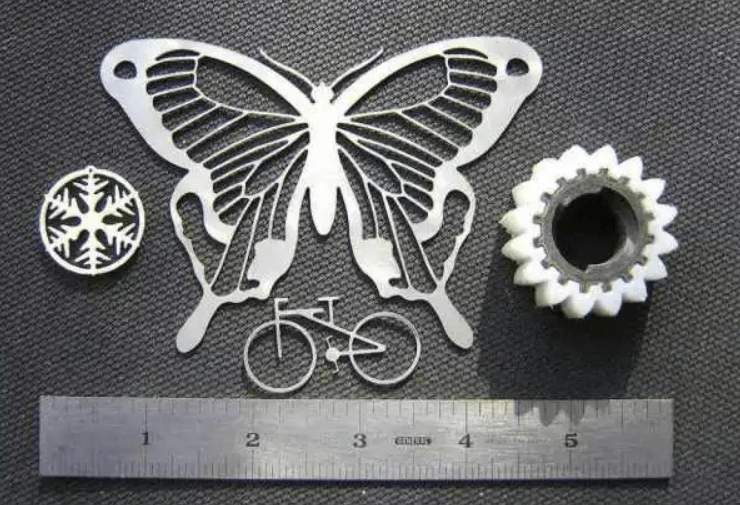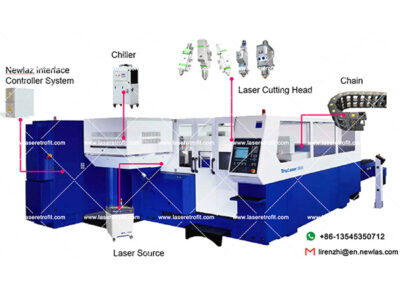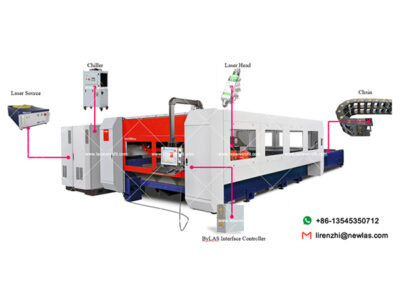Laser cutting is an emerging technology of sheet processing at the end of the last century and the beginning of this century.
After nearly 20 years of continuous technological updating and process development, laser cutting technology and laser cutting equipment is being familiar with and accepted by the majority of sheet metal processing enterprises.
With its high processing efficiency, high processing accuracy, good quality cutting section and many other advantages, three-dimensional cutting processing gradually replace plasma cutting, water cutting, flame cutting, CNC punching and other traditional sheet processing methods.
Market applications for laser cutting
According to the different laser generators, the current market laser cutting technology can be roughly divided into three types: CO2 laser cutting, solid-state (YAG) laser cutting and optical fiber laser cutting.
According to the current development trend, fiber laser with its good beam quality, stable output power and easy maintenance characteristics, is widely used in industrial processing fields, and gradually replace the CO2. YAG and other lasers.
With the increasing use of metal materials in life and industrial applications, the use of fiber lasers for cutting is becoming more and more widespread.
Whether in sheet metal processing, aviation, electronics, electrical appliances, automotive, precision parts, or even daily life in the arts and crafts gifts, kitchenware and other industries, laser cutting technology will be applied.
With rapidly developing processing industry, stainless steel carbon steel, aluminum, galvanized sheet metal, iron and other metal materials can also be cut quickly, accurately and cost-effectively.
Performance advantages of fiber laser cutting
Advanced cutting technology
The principle of optical fiber laser cutting is: the laser outputs a high energy density laser beam during the cutting process and gathers it on the surface of the workpiece, which makes the area irradiated by the ultra-fine focus spot on the workpiece instantly melt and vaporize, and automatic cutting is realized by moving the spot irradiation position through the numerical control mechanical system.
Optical fiber laser cutting technology has only appeared in the past 3 to 5 years, which is currently one of the most advanced laser cutting technologies in the world.
There is no other cutting technology that can surpass it.
Cost-effective
Fiber lasers are the most cost-effective metal cutting lasers, with 3 service life of tens to thousands of hours.
In addition to human factors, the failure rate of the system itself is very small during use.
Even under long-term work pressure, it will not produce any vibration or other adverse effects.
Compared with the CO2 laser system’s reflector and resonant cavity requiring regular maintenance, it really saves a lot of maintenance costs.
At the same time, because laser cutting has high dressing ability and adapts to changes in production capacity, the processed workpiece does not require further polishing, deburring, finishing and other treatments.
From the perspective of production, further labor costs and processing costs are saved, and production efficiency is greatly improved.

Data shows that the overall energy consumption of the fiber cutting system is about 3 to 5 times less than that of the CO2 cutting system, which increases the energy efficiency to more than 86%.
When cutting materials up to 6mm thick, the cutting speed of a 1.5kW optical fiber laser cutting system is equivalent to that of a 3kW carbon dioxide laser cutting system.
Convenient operation
All information transmission and energy transmission of optical fiber lasers are transmitted through optical fibers.
The biggest advantage of transmission in this way is that it saves a lot of manpower and material resources.
For the operator, the requirements are not very high.
It only needs the mechanical drafter to input the drawing into the computer control console, and then the operator loads the sheets onto the machine tool and starts the start button to complete the processing.
And without any optical path adjustment before using the device, energy can be easily transferred to the laser.
Of course, when purchasing a fiber laser manufacturer, people should also look for the brand quality and service, and choose a manufacturer with supporting detailed instructions and perfect after-sales training services.
Compact mechanical size
For an optical fiber laser, it has only one core component – the laser that emits the laser, the production volume of the laser is very small and does not occupy a lot of space like other cutting products of the same type.
Take the fiber laser size that can be used for metal cutting from Raycus as an example:
The size of Raycus 50w-750w medium power single mode continuous optical fiber laser is generally 450*240*680mm (including handle) and weighs less than 50kg.
| Model | RFL-C100 | RFL-C300 | RFL-C500 | RFL-C750 |
| Size | 450*240*680mm (with handle) | 450*240*680mm (with handle) | 450*240*680mm (with handle) | 450*240*680mm (with handle) |
| Weight | <50 | <50 | <50 | <50 |
The weight of Raycus’s 1000-6000w high-power multimodel continuous optical fiber laser also range from 150-400kgs(the specific parameters are subject to the technical parameter table of each product)
| Model | RTL-C1000 | RFL-C1500 | RFL-C2000 | RFL-C3000 | RFL-C4000 | RFL-C6000 |
| Size | 450*240*760 (with handle) | 650*890*100 (with rings) | 650*890*100 (with rings) | 650*1000*1450 (with rings) | 650*1000*1450 (with rings) | 1200*960*1300 (with rings) |
| Weight | <50 | <150 | <150 | <200 | <250 | <400 |
Such light size and weight are more convenient for the placement and transportation of the machine.
Laser cutting precision measurements
Currently, the application of fiber laser has been slowly expanding from large size rough processing to small size and high precision field.
From the use of high-powered lasers to cut carbon steel strip with a thickness of 20mm or more of larger graphics, to the use of medium-powered lasers as low as a few hundred watts for fine processing of thin materials under 1mm can be used to fiber lasers to perform the precision cutting.
So, how precise and small is fiber laser cutting?
Today, you will get an answer with the results of a real test.
Prepare materials to test the machine
Medium power single mode continuous optical fiber lasers
Machine model: Raycus RFL-C500
Test Subject: 0.5mm sheet
Slit width test
Using a specially configured cutting head to cut 0.5mm sheets, the smallest distance between the slit stripes that can be obtained is 0.1mm.

Round hole cutting test Cutting 0.5mm plate, the minimum diameter of the circle that can be cut is about 0.45mm circle, i.e., the minimum diameter of the circle that can be cut using a cutting head with a specific optical configuration in conjunction with a Raycus RFL-C500 continuous fiber laser.

set cutting diameter 1mm

set cutting diameter 0.6mm

set cutting diameter 0.8mm

set cutting diameter 0.05mm

set cutting diameter 0.04mm
Cutting pattern test
The use of Raycus continuous medium-power lasers can realize the precision processing of small patterns, and make full use of the advantages of fiber lasers such as small focus spot and single-mode etc., so that the heat-affected zone on both sides of the material slit is reduced to a minimum, so it can cut very thin stripe.
Even after 50 times magnification, the pattern is still clear and distinct.



Let’s take a look at the overall effect.
Even if the pattern is cut on a sheet with a diameter of less than 12mm, the cut can be kept smooth and the pattern details are clear.



What is the concept of 12mm?
For example: now the diameter of the five cents coin we use is 20.5mm, and the diameter of the dime coin is 19mm, but laser cutting can cut such a delicate pattern on a steel plate less than 12mm.










